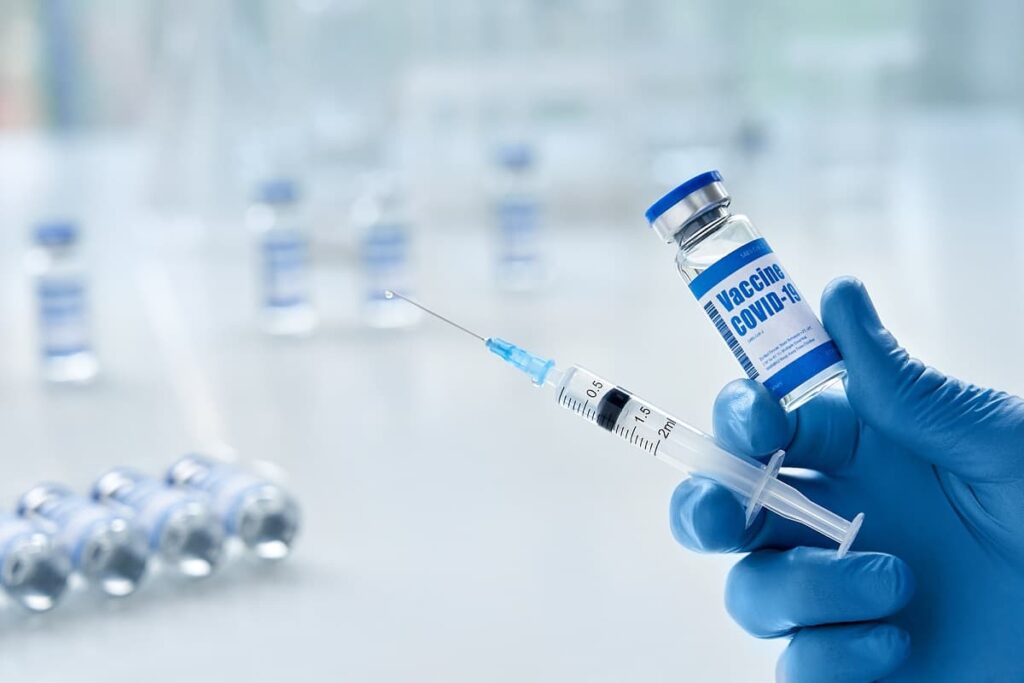Humacyte Stock is Pure Play on Regenerative Medicine
Table of contents

Over the last couple of years, more than half of all companies that went public came through the back door via mergers with special purpose acquisition companies (SPACs). We all know how that has turned out – pretty much what we warned about several years ago in a piece titled How SPACs Reward Everyone Except Retail Investors. Collectively, these former blank check companies have lost about half their value so far this year.

There seem to be few worth picking up, even for bargain hunters. It was nearly impossible to keep up with them all – more than 500 have completed their mergers to date – to the point that we bundled them into listicles last year and included over 100 of them in our tech stock catalog. Among the SPAC deals we briefly covered was one for Humacyte (HUMA), a regenerative medicine company developing implantable human blood vessels to help treat various diseases. A year has passed since Humacyte and Alpha Healthcare Acquisition Corp. sealed the deal in August 2021. Let’s see where things stand.
About Humacyte Stock
One of the many problems with SPACs is that they offer exposure to high-risk industries with mostly pre-revenue companies that have never demonstrated traction by selling something people want to purchase. That led to a surge in electric vehicle stocks and space company stocks. Biotechnology stocks are another extremely volatile asset, with the vast majority stuck in some phase 2 clinical trial or other, promising commercialization of some wonder drug that’s just around the corner.
So it would be easy to dismiss Humacyte outright. The company is pre-revenue with a market cap of about $350 million, well below the $1 billion threshold for any stock to be seriously considered for inclusion in our Nanalyze Disruptive Tech Portfolio. But the 18-year-old Durham, North Carolina company is no fly-by-night operation by any means. Prior to the $245 million attached to the SPAC merger (with only a 30% redemption rate by institutional investors), Humacyte had raised nearly $480 million, including a $150 million equity investment from Fresenius Medical Care (FMS), a German-American company that made $17.6 billion in revenue last year through its network of more than 4,000 outpatient dialysis centers. That was good enough for a 19% stake in the company.
The biotech is helmed by co-founder Dr. Laura Niklason, a professor at Yale and internationally recognized researcher in vascular and lung engineering, plus a lot of other stuff we learned on her Wikipedia page. Humacyte’s scientists regularly get published in prestigious journals. Dr. Francis Collins, who led the Human Genome Project and more recently the National Institutes of Health (NIH), thought enough of what Humacyte is doing with its human acellular vessel (HAV) platform that he highlighted the technology in an official NIH news post. So, it would probably behoove us to understand a bit about what Humacyte is doing so we can better evaluate its commercial value down the road.
What is a Human Acellular Vessel?
While it might sound like a procedure that is about as pleasant as a colonoscopy, a human acellular vessel is a bioengineered blood vessel. We’ll actually lean on the good Dr. Collins to help us explain how the sausage … er, human tissue, is made: Scientists start with a lightweight biodegradable polymer mesh that they seed with human cells. It sits in a 3D bioreactor for about eight weeks while the blood vessel receives nutrition. The system even delivers mechanical pulsations similar to a normal human circulatory system.

Then the researchers remove all the living cells, leaving behind mostly human collagen, which is a major component of the blood vessel wall. That’s important because without human cells, the HAV won’t be rejected by the body and also carries a low risk of infection. Instead, the patient’s own cells migrate to the implant, turning into a functional, living blood vessel.
Case Studies for Human Acellular Vessels
Humacyte is targeting a number of different applications for its human acellular vessels. In the near term, HAVs would be used to repair vascular trauma, act as an access port for dialysis treatments, and to treat peripheral arterial disease. Nearly 500 patients have received implants across eight different clinical studies, including several late-stage trials. The HAVs reportedly enjoy a few advantages over current procedures for vessel tissue repair and replacement. For example, they eliminate the need for harvesting blood vessels from a patient, and the clinical evidence implies HAVs have zero chance of eliciting an immune response and are highly resistant to infection. Some of the clinical data are nearly a decade old, and so far no one has died (at least not from the implants).

The company has made some headway on the regulatory front. The U.S. Food and Drug Administration (FDA) granted its HAV for hemodialysis access a Fast Track designation way back in 2014, followed by the FDA’s first Regenerative Medicine Advanced Therapy designation for the procedure in 2017. In 2018, the Secretary of Defense also pushed some regulatory paperwork to fast track HAVs for military members who suffer vascular trauma. The company plans to apply for the FDA licenses that would eventually allow it to commercialize HAVs for vascular trauma as early as this year and hemodialysis in 2023.
Down the road, Humacyte is developing what you could call organ transplant lite. Specifically, the company is investigating its platform as a way to help treat Type 1 diabetes, an auto-immune disease that destroys the insulin-producing cells in the islets of the pancreas. Pancreas transplants are iffy at best, and a procedure to transplant insulin-producing cells into the portal vein in the liver are only successful long term about 16% of the time. The big brains at Humacyte believe HAVs could be a better alternative for delivering a therapeutic number of pancreatic islets to patients with Type 1 diabetes. They have dubbed the concept a “biovascular pancreas,” and have had some success in rodents and pigs.

Other types of surgery that could leverage the HAV platform in the future include coronary artery bypass grafts and pediatric heart surgery. Other long-term projects include bioengineered lung, trachea, urinary conduit, and esophagus products.
Market for Human Acellular Vessels
Together, Humacyte estimates a total addressable market of $150 billion, though the math doesn’t completely add up – at least based on the specific market estimates provided. For example, of the three near-term go-to-market applications, we only get numbers for hemodialysis, with a range of $5 billion to $6 billion for patients who have infection and access complications. The market for its biovascular pancreas is upwards of $14 billion based on the number of people in the United States currently affected by the disease. Yet Humacyte is projecting more than $12 billion in annual revenue at some vague point in time, and we don’t need a doctorate to tell you that the math definitely doesn’t add up at this point in time. According to the glossy SPAC deck projections seen below, investors can expect $1.9 billion in revenues to materialize by the end of next year – 18 months from now.

But wait, you need to read the fine print. It says “Source: Humacyte internal estimate of sales in the 7th year from projected market launch.” So, if the “Trauma” product launch happens in 2023, expect 2030 revenues to be $600 million. These hard-to-interpret projections masquerading as a simple revenue forecast are a red flag. We called out IonQ for doing the same thing and claiming on their revenue projection slide that “bookings” should be viewed the same as revenues.
In far too many cases we see SPACs that fail to meet their lofty projections by a country mile, or provide forward-looking revenue projections that have some caveat attached. If ESG people really care about the “social and governance” aspects of their stated mission, perhaps they start to publicly denounce firms that misled investors during the SPAC heydays.
Should You Buy Humacyte Stock?
While the science is sound, the business case remains unproven. Last year, Humacyte received FDA authorization to start using its commercial LUNA200 system to supply HAVs for the company’s ongoing clinical trials. Each machine is capable of producing a batch of 200 HAVs per eight-week cycle. The idea is to scale to 40,000 HAVs per year, supplying enough transplantable blood vessels of varying sizes that hospitals can keep a ready supply on their shelves. The key to making this whole enterprise float is to reach industrial production capacity, which is something Humacyte has yet to prove.

The scientific evidence suggests the technology is superior to other surgical methods, but that doesn’t mean it will become the go-to option. Where are the cost comparisons? Will Medicare cover the cost of an HAV versus a cheaper alternative? The medical system (at least in the United States) is a race to the bottom. In addition, schedules for FDA approvals slip all the time, and one bad clinical outcome could sink the ship before it even sets sail. Plans to crack the market outside the United States largely rely on Humacyte’s partnership with FMS, which is focused on the diabetes piece of the business.
Bottom line: Significant revenues are years away, and that SPAC money won’t last forever, especially with clinical trials to fund, regulatory hurdles to jump, and eventual sales and marketing costs if Humacyte gets that far.
Conclusion
Life sciences companies represent some of the coolest technologies out there. They also represent some of the biggest risks for retail investors. The SPAC boom exposed investors to hundreds of companies that would otherwise have remained private, burning the cash of venture capitalists who can afford big losses alongside big gains. Risk-averse investors like us avoid pre-revenue biotech firms like Humacyte regardless of how far the stock drops.
Sign up to our newsletter to get more of our great research delivered straight to your inbox!
Nanalyze Weekly includes useful insights written by our team of underpaid MBAs, research on new disruptive technology stocks flying under the radar, and summaries of our recent research. Always 100% free.
















Likely it will take at least 2 years wait before first revenue appears. But for that time frame you can find a lot other healthcare/biotech stocks expecting significant upside with less risk.
Eg consider where Renalytics (covered here a few months ago) will be 1-2 years from now. Most likely it will have significant revenue and share price will multiply a few times. So from the risk/reward perspective I find Renalytics a much better choice for the timeframe of 1-2 years.
With Humacyte: it is probably sensible to wait at least 1 year before considering buying it.
Or one can choose not to invest in small pre-revenue companies as the current bear market means some won’t make it to the finish line. There are many quality names out there trading at a discount and fishing for deals in small caps is just too risky. That said, everyone has their own tolerances for risk. Renalytix looked really good but they just can’t seem to show us the meaningful revenues. Not sure what the problem is there.
Excellent article . I want to mention another potential factor that reduces TRAUMA growth 2023-2030. That is exact time line for TESLA FULL SERVUCE DRIVE which will reduce car accidents that overwhelming cause large % of trauma.
Very good thinking! The side effects of autonomy aren’t so apparent sometimes.